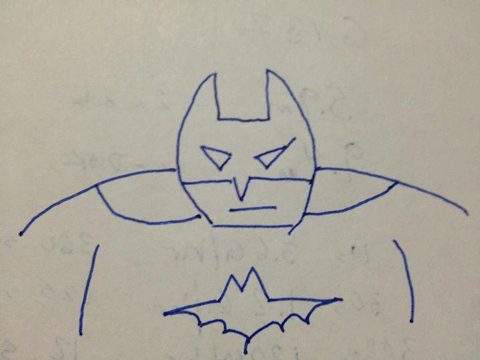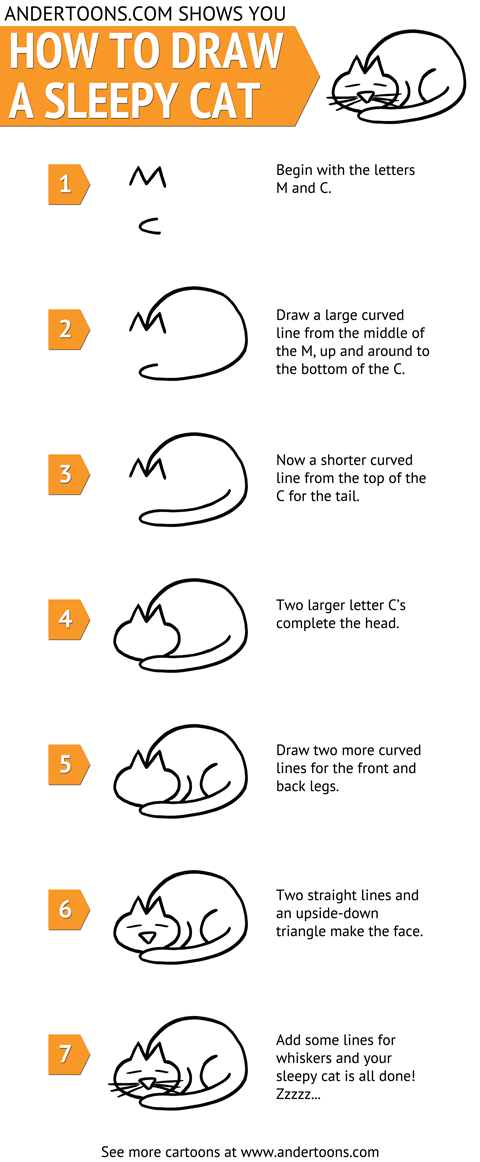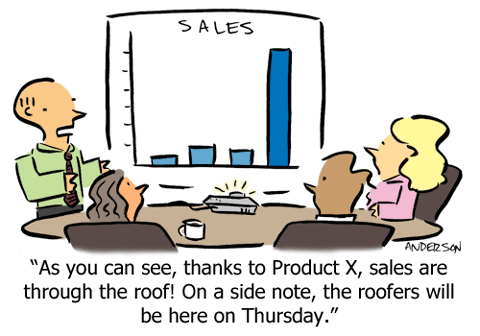Here’s a few of the great Batmans (Batmen?) people have been drawing using my recent How To Draw Batman tutorial:

There’s still plenty of time before The Dark Knight Rises comes out to scratch that bat-itch and draw your own! Enjoy!

The cartoon blog of Andertoons cartoonist Mark Anderson. He discusses his cartoons, cartooning, comics and, oddly enough, LEGO.
Here’s a few of the great Batmans (Batmen?) people have been drawing using my recent How To Draw Batman tutorial:

There’s still plenty of time before The Dark Knight Rises comes out to scratch that bat-itch and draw your own! Enjoy!
Summertime and the living is easy. Especially for my cats who love nothing more than finding the sunniest spot in a room and settling in for a good warm nap. So in that spirit I thought I’d show you how to draw your very own sleepy cat cartoon. (Just try to draw quietly so you don’t wake anyone.)
When you’re finished, feel free to tweet, pin, email or otherwise share a pic of your sleepy cat cartoon with me and I’ll post it here at the blog! Enjoy!

Pretty easy, right? You should try out my other how-to-draw tutorials too:
And feel free to check out all of my cat cartoons here.
Sparking Design‘s Chris Sparks is leading Team Cul de Sac and raising funds for Parkinson’s research in honor of inky pal and Cul de Sac creator, Richard Thompson.
From the TCDS page:
Richard was recently diagnosed with Parkinson’s disease. With Richard’s support, TCDS has asked cartoonists across the country to draw his characters so the artwork can be compiled into a fundraising book and the artwork auctioned to raise additional money. Hundreds of cartoonists have responded and sent artwork in to be compiled in a book soon to be published by Andrews McMeel. We’ve received cartoons from many of Richard’s personal friends including Stephen Pastis (Pearls Before Swine), Sergio Aragones (Mad, Groo), Patrick McDonnell (Mutts), Pat Oliphant (Pulitzer Prize political cartoonist), Dave Kellet (Sheldon, Drive), Gene Weingarten and David Clark (Barney & Clyde), Mason Mastroianni (B.C.), Roger Langridge (Muppet Show comic book, Marvel’s Thor: The Mighty Avenger, Fred the Clown), Shannon Gallant (G.I.Joe), Michael Cavna (Washington Post), Steven Artley (Artleytoons), Barbara Dale and Steve Conley (Astounding Space Thrills, Bloop) and even Bill Watterson of Calvin and Hobbes fame. That’s just the list of people we asked first because they know Richard. Many other fantastic cartoonists contributed, space doesn’t permit us to list them all, but we appreciate everyone’s contributions.
So, the book is available now for purchase here, and all of the art is currently up for auction (just a few days remaining!) here.
If you love the oboe or know someone who does, my original art and contribution to the book is available here.
I’m proud to be part of Team Cul de Sac, and so amazed at the efforts of everyone involved. Please support TDCS and Parkinson’s research (and get an awesome book to boot!) today.

A large part of my business at Andertoons is creating custom cartoons and comics for clients ranging from a single person to some of the largest corporations. And while the response is always very positive, occasionally there’s a hiccup in the process, so I thought I’d share a few problems a client can avoid when commissioning their custom cartoon:
The first thing you’re going to be doing is looking around for a cartoonist whose art and sense of humor speaks to you. Make sure you find someone that draws well, looks professional, and is, of course, funny. And then, when you find that person, make sure you hire that person.
What I mean is don’t hire a cartoonist to ape the style or sense of humor of another cartoonist. For example, I like XKCD, but I wouldn’t hire that artist if I were looking for a Calvin and Hobbes type comic. You’re asking someone to do work they’re not comfortable doing, and the end result will reflect that.
Asking a cartoonist to be a different cartoonist is asking for headaches.
When a cartoonist creates a cartoon, they’re racing against the clock. I’m not talking about the deadline here, I’m talking about the reader.
A cartoon has about 5-7 seconds to establish the scene, introduce the characters, set up the joke, and deliver the punchline. The most successful cartoons are all about economy.
A common misstep people make is to want to include more detail than is necessary. I’ve had clients want to include:
In general, the more you include in a cartoon, the more chances you provide for a reader to be derailed. And if you’ve ever told a rambling joke that really bombed, you know it’s not pretty.
Keep it simple.
There’s a lot of back and forth in the creation of custom cartoons. You’re going to consider topics, jokes, sketches, and, of course, the final art. But make sure if you have an issue along the way that you don’t wait until delivery of the final cartoon to bring it up.
If a joke doesn’t sound right, ask for a rewrite right away. If a sketch doesn’t look quite right, ask for a revision then and there. Don’t be shy, you’re not going to hurt anyone’s feelings. And a professional cartoonist probably has language in their contract that charges additional fees should you request significant changes to final art.
Save yourself time, headaches and money by addressing concerns in a timely manner.
People love to share cartoons, it’s what makes them so effective. So it’s natural for a client to show their upcoming cartoon around the office to see what people think.
Obviously you’re going to want people to laugh, but if one person, or even a few, aren’t doubled over in hysterics, it’s OK. Not everyone one has the same sense of humor. Or maybe they’re in the middle of something important. Or maybe they’re just in a really lousy mood.
You’re never going please everyone, so don’t worry about it.
Custom cartoons are a wonderful way to get some attention. They’re fast, funny, and easily shared. But as engaging as a cartoon is, it’s no good unless people know it’s there.
Tweet it, blog it, like it, pin it, plus it, email it, fax it… Take one hour and send it to customers, partners, suppliers, friends, relatives, industry leaders, anyone! You’ve crafted and paid for a great cartoon, now get out there and show it off!
The more people see it, the more they’ll share it, which means more people coming back to you to check it out, and probably sharing it again.
Custom cartoons are a fun and unique way to promote yourself, your product, or your company. And keeping the above suggestions in mind will make commissioning your own cartoon as much fun as the cartoon itself.
If you want to read more about custom cartoons, here are some additional articles:
A while back I did a video on shading cartoons in Photoshop, so I thought I’d also give you a look at shading my cartoons with markers as well.
Enjoy:
Video Transcription
Hi there, this is Mark Anderson from andertoons.com, and I’m going to show you how I shade my cartoons using markers. We’re going to jump right in here. I have got a batch of cartoons that I’ve already inked, they are all about school by the way. And I am using Prismacolor cool grey markers, I think this one it’s hard to tell but I think this is a 30%.
I usually let the ink dry for a little while, although if I am in a hurry, the markers or the brush pen that I use dries pretty quickly, so I can usually jump right in and shade right away. But if I have the time I like to give the ink just a little bit time to set, so I can make sure that it doesn’t smear. I’ve got four cartoons on a single page of, I don’t know, this is 8X10 or, oh it’s 9X12, I believe it’s 9X12 Borden & Riley Marker Bleed Proof Paper, and I tend to work really small and I try to be efficient. So I’ve got four cartoons on the one sheet of paper here that I am shading, and again about being efficient, I am using the same marker to do washers on all four cartoons at once.
So I’ll shade one cartoon with the 30%, and then I will flip the paper around like so and then I will continue shading with 30% until I figure out I’ve got over 30% is done, and then I will move onto 40, 50, 60, what have you. I don’t do well a lot of shading, you can see here like there is a desk that I am not shading, you couldn’t find, there we go. I’m not going to shade all of the grass behind this, I am not going to shade the sidewalk. I tend to stay pretty light, it’s just personal taste plus it’s a lot less shading and there is a lot less marker work to do.
It’s just one of those things that has evolved over the years, I used to shade a lot more and I used to shade a lot heavier and darker and as time is going on, I tend to almost never shade the background on my own cartoons. I also work pretty fast, as you can tell. I’m going to shade four cartoons here about 7 minutes from beginning to end. I know a lot of people shade all sorts of different ways, ink washers and of course, I also have a video where I’ve shade the cartoons on the computer using some custom patterns that I created in Photoshop, but even that takes longer than most because then I can undo, and oh I’m not sure if that’s quite right, there is a real organic, real feel to working like this that I really like. You are not getting the marker in all of the places and you get variance, and sometimes it’s darker and sometimes it’s lighter, and it’s just there is a real feeling to it that I can’t get any other way. So if I can shade this way, I prefer to.
I’m using my iPhone, I apologize for this sort of shakiness and sometimes if the light tends to change, I’ve got my iPhone, I’ve got a special clamp clipped to my lamp on my drafting table that’s taking this, which is pretty good video. Now that I’m looking at it, it takes a little bit to see the product that you are shading through the iPhone while you are shading it, so this isn’t like 100% natural, so I tend to get really close, I have bad eyes, I have terrible vision. So when I am shading I’m right on top of it, and maybe it’s because I work so small, I don’t know, but I tend to like get my nose, I’ve actually gotten like my nose print on art while shading that I have to write a little note, you know remove nose print in Photoshop.
But this, I’m actually back a little bit because I need to make room for the camera, so you are not going to see any nose prints today on the art. We’re finishing up a lot of these here, I am just doing some detail work, there is my giant hand, looks like I am doing some darker work. I tend to work with again Prismacolor cool grey markers, and 30% is about the lightest, I’ll go, I find that that scans pretty light. I used to go 20% and 10%, but then I’d do all of these different percents, and then I would scan them and pretend the 20 just wouldn’t show up.
So over the years, I’ve gotten it down to be between 30 and 60, if I need something really black, I’ll do 70 or 80 but that’s pretty rare. Now I’ve got my little fixed notes there, and I need to fix the A in that formula on the chart board via the back of the a little bit. I’ll write myself notes like that, I tend not to draw over, again I draw really fast too, so little mistakes, I’ll write myself a note and then I’ll Photoshop out any problems.
Doing just a little bit of shading back there on the periodic table, let’s now go and see, looking to see if I, doing the little 30% line work on that sidewalk to make that pop a little bit, oh hey we are shading the background, breaking my own, I didn’t expect that I would but then you have it. You can see I’ve got the caption written in pretty sloppily below, that’s just to remind myself the caption. There has been times I have done a cartoon and inked it and shade it and then I didn’t write the caption down on the final art, and I had thought, oh I will find this sketch out or I will remember it, and I never do, and then I have a cartoon where I am like, oh, oh what was that caption, it’s driving me crazy.
Well we are finishing up here, there is four cartoons, and we are coming up to the end of the video, hope you liked it, feel free to see all of my cartoons on andertoons.com, there is thousands and thousands there, and I hope you enjoyed this look at me shading my cartoons with markers. I hope you learned something, I had a lot of fun, and I’ll see you next time.